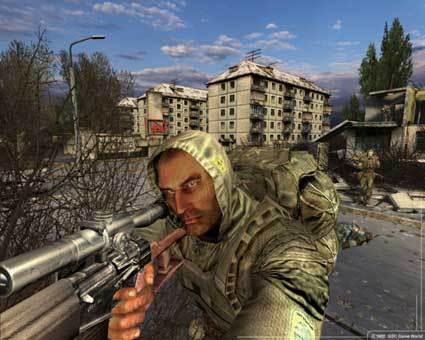Integrated VGA & How Good Is ATi's Radeon 9100 IGP?
The Many Faces Of 3D, Continued
The current version of Microsoft's 3D standard is DirectX 9. In this revision, the programmability of 3D chips was greatly extended. They can now process more orders and longer programs and, most importantly, come with improved floating-point precision. The majority of games that are released today are still mostly DirectX 8 games. Only few titles are available that actually implement DirectX 9 shaders: Halo, Tomb Raider - AOD, Aquanox 2 and the synthetic benchmark 3DMark 2003. Other DirectX 9 titles are hotly anticipated, among them Half-Life 2, Doom III (OpenGL), FarCry, Painkiller and Stalker.
Screenshot: Stalker - Oblivion Lost
Screenshot: Half-Life 2
Screenshot: Farcry
Other important features of modern graphics chips deal with the improvement of image quality. One such feature is FSAA (full scene anti-aliasing), which reduces the jagged edges on slanted object borders. Another is anisotropic filtering, which improves the crispness and the level of detail of textures. There is no standard for either of these features yet, so every chipmaker is implementing its own solutions.
In closing, we can say that 3D hardware still has a good lead over the games. Thanks to improved tools for programmers (such as HLSL compilers), it is easier for developers to actually take advantage of the newest features. Even if a game does not yet make use of new 3D features, it can still benefit from the higher performance of newer 3D graphics chips from the DirectX 9 generation. Only this newest batch of cards is really fast enough to be able to cope with quality improving features such as FSAA and anisotropic filtering.
Get Tom's Hardware's best news and in-depth reviews, straight to your inbox.
Current page: The Many Faces Of 3D, Continued
Prev Page The Many Faces Of 3D, Continued Next Page The Status Of Integrated Graphics Today

